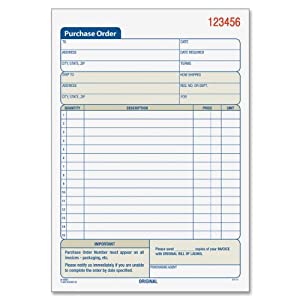This interest should be recorded as of December 31 with an accrual adjusting entry that debits Interest Receivable and credits Interest Income. margin of safety formula calculation example and faqs An example of an expense accrual is the electricity that is used in December where neither the bill nor the payment will be processed until January. The December electricity should be recorded as of December 31 with an accrual adjusting entry that debits Electricity Expense and credits a liability account such as Accrued Expenses Payable. The remaining amount is recorded as deferred income (a liability) on the balance sheet for that year. In December, the subscription totals will be accounted for as a deferred expense for Anderson Autos, because the products will not be delivered in the same accounting period they were paid for in. For accounting purposes, both prepaid expense and deferred expense amounts are recorded on a company’s balance sheet and will also affect the company’s income statement when adjusted.
Allocating the income to sales revenue may not seem like a big deal for one subscription, but imagine doing it for a hundred subscriptions, or a thousand. The earnings would be overstated, and company management would not get an accurate picture of expenses vs revenue. It will result in one business classifying the amount involved as a deferred expense, the other as deferred revenue. Prepaid expenses are used or depleted by a business within a year of purchase.
Deferred Expenses
Understanding the difference between deferred expenses and prepaid expenses is necessary to report and account for costs in the most accurate way. As a company realizes its costs, it then transfers them from assets on the balance sheet to expenses on the income statement, decreasing the bottom line (or net income). Deferred revenue has become more common with subscription-based products or services that require prepayments.
What is the difference between an accrual and a deferral?
The category applies to many purchases that a company makes in advance, such as insurance, rent, or taxes. Deferred expenses fall in the long-term asset (more than 12 months) category. They are also known as deferred charges, and their full consumption will be years after an initial purchase is made.
What Type of Purchase Are Prepaid Expenses?
- To get a discount, Anderson pays the full subscription amounts in advance of the renewals.
- The entire deferred revenue balance of $1,200 has been gradually booked as revenue on the income statement at the rate of $100 per month by the end of the fiscal year.
- Contracts can stipulate different terms whereby no revenue may be recorded until all of the services or products have been delivered.
- Accrued expenses would be recorded under the section “Liabilities” on a company’s balance sheet.
- Hence, the cost of insurance is deferred on the balance sheet until the next payment.
ABC International pays $24,000 of insurance in advance to a supplier for its full-year D&O insurance. ABC records this as a credit to its cash account and a debit to its prepaid expenses asset account. After one month, it has consumed 1/12th of the prepaid asset and records a debit to the insurance expense account for $2,000 and a credit to the prepaid expenses asset account for the same amount. A deferral accounts for expenses that have been prepaid, or early receipt of revenues.
Deferred expense transactions are common in small businesses, and we will cover a few of them here. For the past 52 years, Harold Averkamp (CPA, MBA) hasworked as an accounting supervisor, manager, consultant, university instructor, and innovator in teaching accounting online. For the past 52 years, Harold Averkamp (CPA, MBA) has worked as an accounting supervisor, manager, consultant, university instructor, and innovator in teaching accounting online. The company would have to repay the customer in either case unless other payment terms were explicitly stated in a signed contract. This last section here provides some general guidelines you can follow to make recording these transactions easy. My Accounting Course is a world-class educational resource developed by experts to simplify accounting, finance, & investment analysis topics, so students and professionals can learn and propel their careers.
This second entry would continue each month until the subscription period was complete. Note that Photo Subscription Deferred Revenue is a liability and is recorded on the balance sheet as such. As you may have gathered, deferrals are central to cultivating an accurate record of your business finances. If you need a bit more help understanding deferrals, maybe some common examples will give you a clearer picture.
ABC delivers the related goods in the following month, and credits the revenue account for $10,000 and debits the unearned revenue liability account for the same amount. Thus, the unearned revenue liability account was effectively a holding account until ABC could complete the shipment to the customer. The company sends the newspaper to its customer each month and recognizes revenue as the fiscal year progresses. The accountant records a debit entry to the deferred revenue account monthly and a credit entry to the sales revenue account for $100. The entire deferred revenue balance of $1,200 has been gradually booked as revenue on the income statement at the rate of $100 per month by the end of the fiscal year.
Deferred revenue is recognized as a liability on the balance sheet of a company that receives an advance payment because it has an obligation to the customer in the form of the products or services owed. The payment is considered a liability to the company because there’s a possibility that the good or service may not be delivered or the buyer might cancel the order. A deferred charge is a cost recorded in a later accounting period for its expected future benefit, or to comply with the matching principle, which matches costs with revenue. Deferred charges include costs such as those related to startup activities, obtaining long-term debt, or running major advertising campaigns. These are carried as non-current assets on the balance sheet until they are amortized. Contracts can stipulate different terms whereby no revenue may be recorded until all of the services or products have been delivered.
Recording Deferred Expenses
The insurance company receiving the $12,000 for the six-month insurance premium beginning December 1 should report $2,000 as insurance premium accounts payable vs notes payable revenues on its December income statement. The remaining $10,000 should be deferred to a balance sheet liability account, such as Unearned Premium Revenues. In each subsequent month the insurance company will record an adjusting entry to reduce the liability account Unearned Premium Revenues by $2,000 and report $2,000 as Premium Revenues on its income statement. Similarly, cash paid for goods or services not received by the end of the accounting period is added to prepayments to prevent overstating expenses in the payment period.
Deferred revenue, also known as unearned revenue, refers to advance payments a company receives for products or services that are to be delivered or performed in the future. The company that receives the prepayment records the amount as deferred revenue, a liability on its balance sheet. The accountant records the amount as a debit entry to the cash and cash equivalent account and as a credit entry to the deferred revenue account when payment is received in advance for a service or product. A debit entry for the amount paid is entered into the deferred revenue account and a credit revenue is entered into sales revenue when the service or product is delivered.
Eight customers have made a total advance payment of $625,000, and the equipment will be delivered to them between December 18 and February 8. As soon as the equipment is delivered, the customers will pay their balance amount, and the order will close. Until then, the company will report the respective amount on its balance sheet as deferred revenue.




